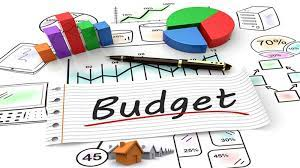If you want to win more commercial contracts this year, there’s one tool in your sales arsenal that deserves more attention than it gets: your proposal.
In the landscaping, tree care, and lawn care industries, your proposal is often the first in-depth glimpse a client has into how you operate. It’s more than a list of services. It’s your credibility in writing. It’s your professionalism on paper. And it’s a key part of closing deals consistently.
That said, not all proposals are created equal. Many companies settle for a generic, one-size-fits-all format. Others forget that a proposal is just as much a sales tool as it is a project breakdown.
If you want to stand out and earn your spot as the trusted choice, your proposals need to do more. Let’s walk through five ways to strengthen your proposal so that it does the selling for you, even before you ever walk onto the job site.
1. Show That You Understand Their Problem
A great proposal starts with empathy. Before you jump into what your team will do, show that you understand the specific challenge the client is facing.
For example, if you’re bidding on a commercial property, don’t just say you’ll “mow the lawn and trim the shrubs.” Instead, describe the problems you’ve observed: thinning turf in high-traffic areas, outdated mulch, or irregular pruning cycles that affect curb appeal.
When you identify and articulate the problem better than your competitors do, you establish immediate trust. It tells the client, “We get it. And we’re already thinking about how to solve it.”
2. Be Specific About What You’ll Do and How You’ll Do It
Your proposal should never leave the client guessing. Generic language like “general maintenance” or “seasonal cleanup” isn’t persuasive. Specifics are.
Outline the methods, frequency, materials, and standards your crew will follow. If you use high-end equipment or environmentally friendly practices, explain how those add value. If your staff is trained in particular techniques, make that known. The more detail you provide, the easier it is for clients to understand the difference between you and the cheapest bid on the table.
This is where you begin to justify your pricing, without even discussing the price itself.
3. Prove You’re Qualified
It’s not enough to say you’ll do a great job. You need to show it.
Include credentials, licenses, certifications, and experience. Highlight how many similar projects your company has handled and offer a few examples. Mention long-term client relationships. All of these are signals that you are not only capable but also trusted in the field.
This section of your proposal should read like a resume for your business. It reassures clients that they won’t be taking a risk by choosing you.
4. Demonstrate Dependability
Trust is earned over time, but you can build some of it immediately with the right proof.
Add testimonials, before-and-after photos, and case studies if possible. If your company is bonded, insured, or a member of a recognized professional organization, list that as well.
This kind of information helps a prospect feel more confident in their decision. They can see you’ve worked with others and delivered. Reliability is not just about showing up. It’s about finishing the job the right way, every time.
5. Close Strong
Your closing is not an afterthought. In many cases, it’s the last thing the client reads and the part they remember most.
This is where you remind them why you’re the right choice. Recap your understanding of the job, your unique approach, your experience, and your track record. Invite them to take the next step, whether that’s a call, site walk-through, or formal approval.
A strong close doesn’t beg for the sale. It earns it through confidence and clarity.
Final Touches That Make a Difference
- Keep it simple: Avoid overly technical language. If the decision-maker doesn’t understand the proposal, they won’t be confident saying yes.
- Use formatting wisely: Make it easy to scan. Use bold headings, bullet points, and spacing to highlight key information.
- Stick to your framework: Once you build a strong proposal template, save it. Customize it for each project, but don’t reinvent the wheel every time.
Remember, your proposal isn’t just a formality. It’s your sales pitch in print. If you take the time to make it clear, specific, and compelling, you’ll not only close more work, you’ll attract the kind of clients who respect and value what you do.
Upcoming Event
Join Fred Haskett for a brand-new 2-day masterclass designed to help you build a repeatable sales process that attracts the right clients and keeps them for the long haul.
Masterclass: Commercial B2B Sales That Win and Keep Clients
🗓️ June 24 & 25, 2025
⏰ 1:00 PM – 2:30 PM EDT each day
💻 Live on Zoom (recordings included)
🔗 Click here to register now
Fred will walk you through how to:
→ Build trust fast using the consultative sales approach
→ Create proposals that position you as a partner, not a vendor
→ Handle price objections without dropping your value
→ Use the Annual Wish List Walk to upsell with ease
→ Create a sales engine that works with or without you
🎯 Who should attend?
Business owners, account managers, and sales leads in the landscaping, lawn care, or tree care industries who are ready to stop chasing and start converting with confidence.
🎁 Early Bird Pricing ends June 13
Save your seat now and get access to both days for as low as $69.
👉 Grab your spot here



